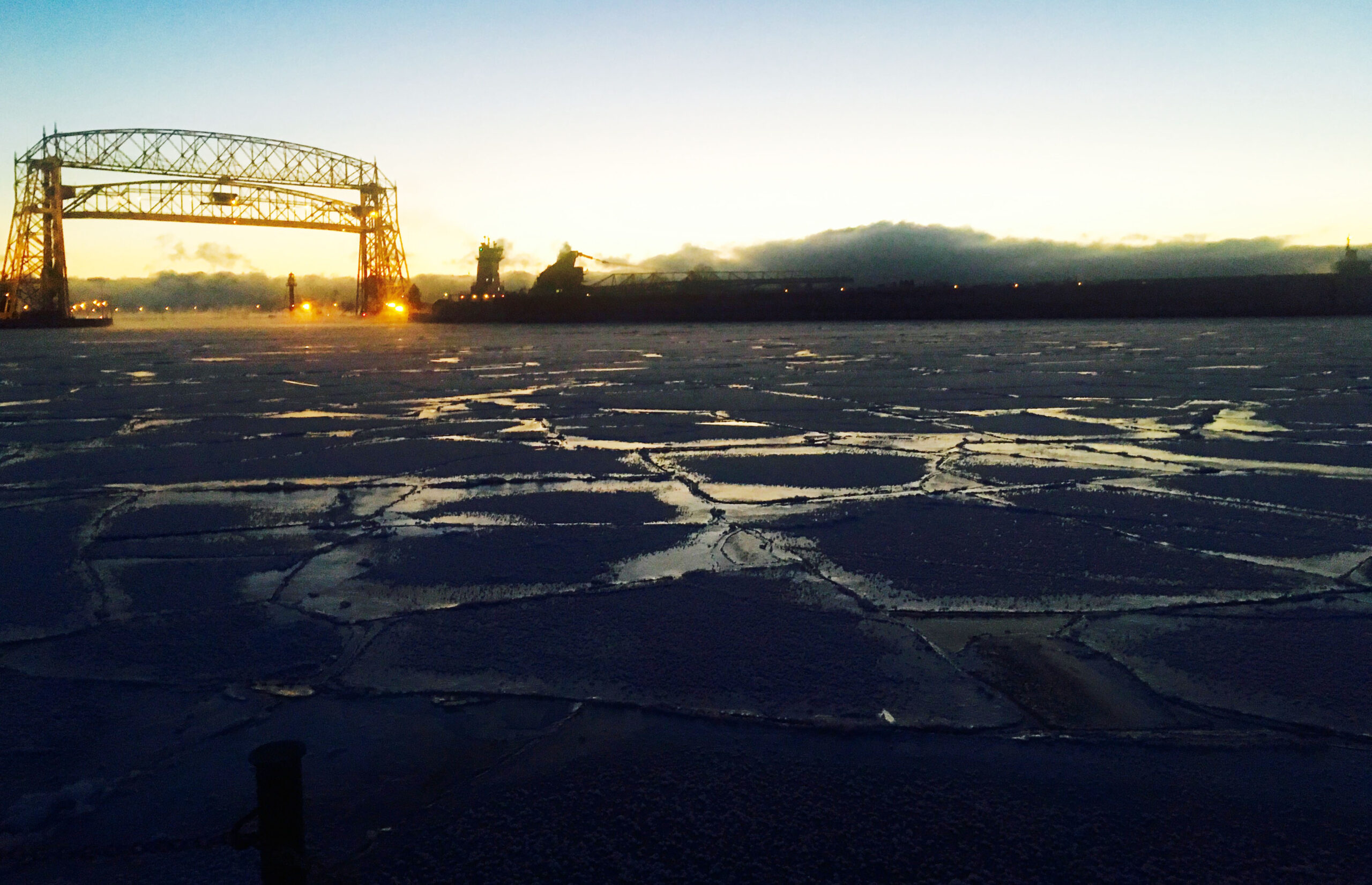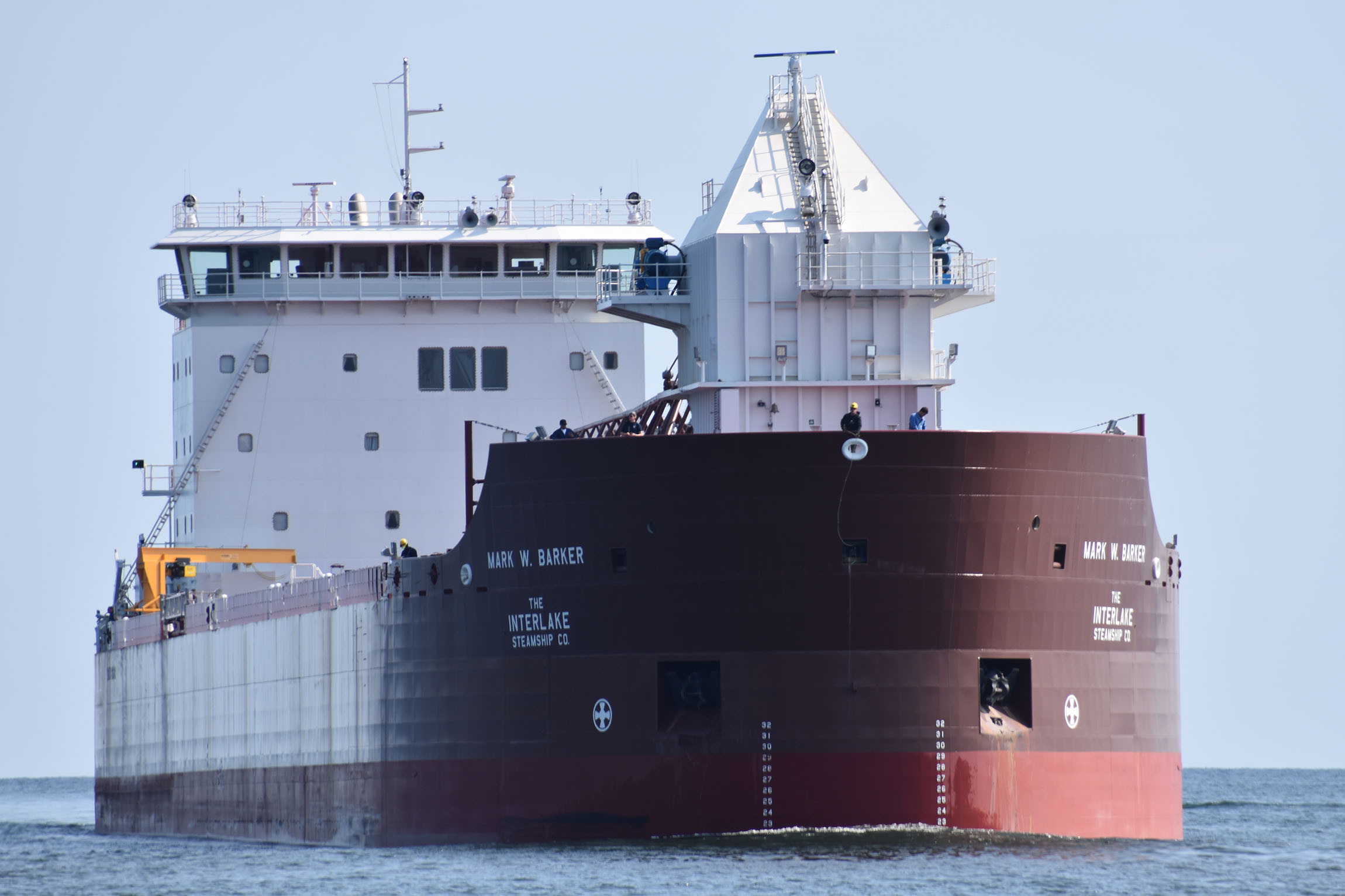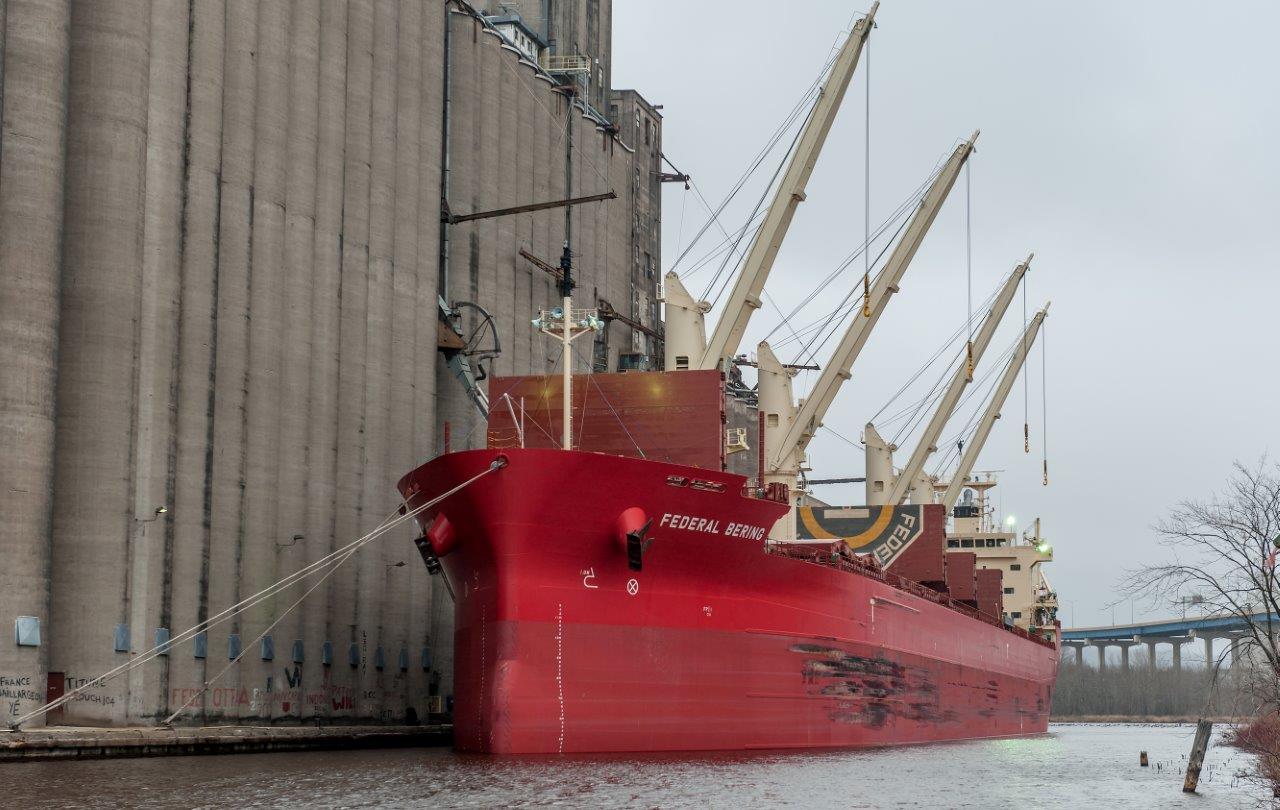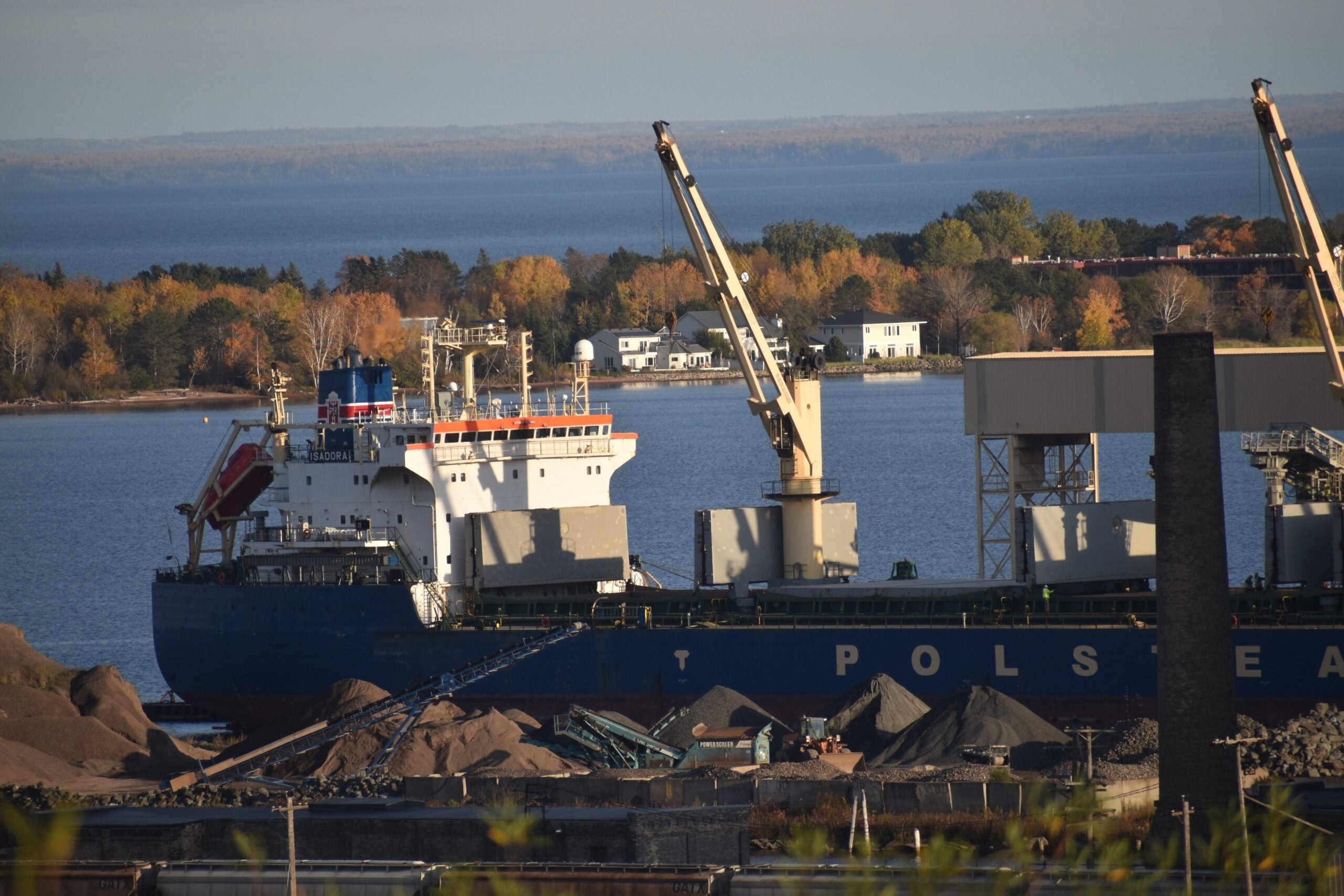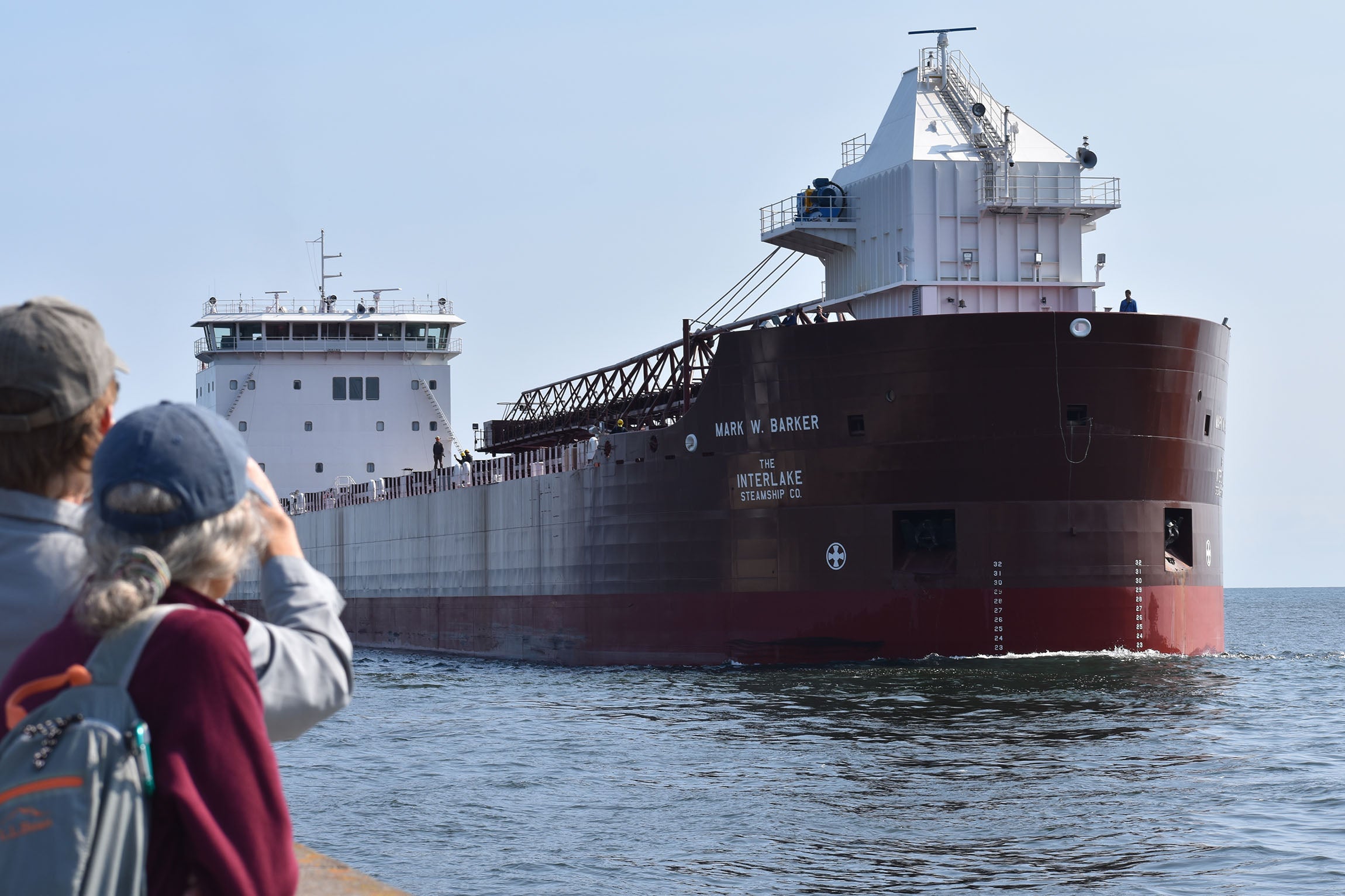The stretch of sub-zero temperatures is making it difficult for ships to transport cargo on the Great Lakes. Lake vessels are trying to haul as many loads as they can before the shipping season ends mid-month.
As of Wednesday, eight lake vessels were delayed outside the Twin Ports harbor. Adele Yorde with the Duluth Seaway Port Authority said the weather may make these their last deliveries before the season ends when the Soo Locks close Jan. 15 at Sault Ste. Marie, Michigan.
“The freezing up mostly of the equipment, not necessarily Lake Superior at this juncture, has really caused some slowdowns in the loading process for iron ore, which is causing a back-up of all of the vessels heading in to pick up end-of-season deliveries here for the steel mills on the lower lakes,” said Yorde.
Stay informed on the latest news
Sign up for WPR’s email newsletter.
All of the ships are waiting to load iron ore pellets that have been transported from mines on the Iron Range, which have also experienced production delays, Yorde said.
“Then, they’re getting loaded in rail cars that have to come down to the Twin Ports or over to Two Harbors. This time of year, you hear all kinds of stories about frozen train brakes, switching gears or the pellets freezing in the cars and having to be thawed before they’re emptied,” she said. “When you’re talking a train of 120 cars and you’ve got pellets frozen in 120 cars, you’ve got a long process to get them thawed, get them dumped, (and) get them on conveyers.”
Yorde noted conveyer belts have also frozen at times, preventing loading of ships. In the summer, she said it can take up to 10 hours to load cargo. Now, Yorde said it’s taking at least twice as long to move product for shipment.

In this Thursday, Jan. 4, 2018 photo, ice can be seen on Lake Superior. Danielle Kaeding/WPR
Glen Nekvasil, vice president with the Lake Carriers’ Association, said those cargoes are essential.
“The cargoes that we move in the, what, 12 to 13 days, are very, very important to maintaining steel production, manufacturing and power generation in the Great Lakes basin,” he said.
Nekvasil said some ships have needed help from the U.S. Coast Guard’s ice-breakers to deliver cargo on the Great Lakes. On Lake Erie, the Coast Guard reported at least four ships had been beset by ice Tuesday and Wednesday. Some ships had also been slowed or stopped by conditions on the St. Marys River, said Nekvasil.
“If you can’t get through the St. Marys, then that Minnesota and Michigan iron ore doesn’t get down to the steel mills and the low-sulfur coal from Montana and Wyoming doesn’t get down to the power plants,” he said.
Some steel mills and power plants rely solely on shipping to receive cargo, Nekvasil said.
“They do not have a rail connection. Even if they did, the railroads don’t have enough rolling stock and locomotives to take over all the cargoes that we move on the lakes here,” he said.
Nekvasil said the weather highlights an underlying need for more ice-breakers on the Great Lakes. Funding has been authorized by Congress for an additional vessel, but no money has been appropriated to the U.S. Coast Guard.
Final numbers haven’t yet been released, but Nekvasil expects lake vessels will have moved around 85 million tons of cargo for the 2017 shipping season. The iron ore trade was up year-over-year by nearly 12 percent to 54.9 million tons as of November, according to most recent figures from the Lake Carriers’ Association. Last year’s season total overall saw 54.1 million tons of iron ore shipped on the Great Lakes and St. Lawrence Seaway.
Wisconsin Public Radio, © Copyright 2024, Board of Regents of the University of Wisconsin System and Wisconsin Educational Communications Board.

